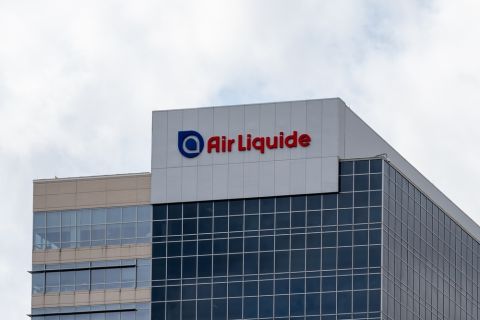The E&P industry probably understands the concept of risk and reward as well as any casino owner in Las Vegas. Because the industry is working with a product that it rarely sees, it has come to rely on numerous calculations to estimate what it cannot accurately predict.
Such is the case with estimated ultimate recoveries (EURs). In conventional reservoirs, engineers rely on calculations from the 1940s and '50s to determine each well's EUR, and usually these estimates are within 90% of the actual ultimate recovery. Unconventional reservoirs, on the other hand, refuse to bend to simplistic rules that have explained the behavior of their conventional cousins for decades. This simple inability to accurately estimate recoverable reserves impacts not only the company predicting a well's performance but that company's stakeholders and government regulators as well.
"The unconventionals have added a lot of fuel to the debate," said Ken Medlock, senior director of the Energy Forum at the James A Baker III Institute for Public Policy and adjunct professor and lecturer in the Economics department at Rice University. "If you think about shales, they're a new frontier, and typically there's a steep learning curve when you dive into any kind of a new frontier.
"That's what we're experiencing right now. There's a lot of 'get to know you' time."
Added Scott Wilson, senior vice president at Ryder Scott, "The debate keeps everyone thinking. The fact that there's controversy is good because that means we haven't stopped working the problem."
So what is the problem?
To understand the scope of the issue, it might be helpful to review how EURs are determined in conventional reservoirs. According to Dr. Stephen A. Holditch at Texas A&M, typical factors in conventional EUR to compute hydrocarbons in place are formation thickness, porosity, water saturation, and pressure. EURs are then determined using volumetrics, decline curve analysis (DCA), materials balance, or reservoir simulation.
"Conventional reservoirs have high permeability and are usually associated with a fixed area, defined by structure or faults," Holditch said. "In conventional fields, we can determine the average reservoir pressure by simply shutting in some or all of the wells for 72-plus hours and measuring the rate at which the pressure increases in the shut-in wells. With accurate production and pressure data and good geology, it is rather easy to determine the EUR in a conventional reservoir."
According to John Lee at the University of Houston, the two most commonly used methodologies are volumetric analysis and DCA. Volumetric analysis estimates the volume of the hydrocarbons in place by examining reservoir properties and analogous reservoirs to determine the fraction of the hydrocarbons that might be recovered.
DCA, which is even more commonly used, projects an observed decline trend into the future. This works well in conventional fields because the assumptions required are satisfied by these reservoirs.
"The key assumption here is that after a relatively short period of time, maybe a few weeks or months at most, a well begins to drain its entire drainage area, and that happens pretty quickly," Lee said. "That's the condition that has to be satisfied for our conventional DCA to be reliable."
Unconventional reservoirs
Naturally, as anyone familiar with unconventional reservoirs can attest, few of the industry's hard-gained rules apply. A key issue that refuses to be solved by more science or R&D is a lack of production history.
This also affects DCA, Lee said, because the assumption that the well is draining its entire drainage area within a few months is totally incorrect in low-permeability reservoirs.
"It can take years before an unconventional well begins to drain out to its drainage boundaries," he said. "Until then, our conventional methods of extrapolating decline trends are unreliable."
David Anderson, vice president of Software Technical Development for Fekete Associates Inc., echoed Lee's concerns. "Production history is extremely important," he said.
"That's the single biggest problem or limitation that we have in really coming up with a reliable estimate of EUR in many of these plays. Most of them are less than two years old, some of them even less than that, so we just don't have good analogs for them yet."
Standard DCA is based on an equation developed by J.J. Arps and others in the 1940s. The original model is based on boundary-dominated flow, the same drainage calculation that Lee referred to. In transient-flow regimes like shale plays, many engineers use a hyperbolic "b" exponent in the Arps equation to generate the production decline curve.
According to an article from Ryder Scott's "Reservoir Solutions" newsletter, debate centers on how high this b factor should be. "Some evaluators force a 0 Medlock explained that trying to force shale plays into the Arps equation can lead to less than desirable results. "A lot of people were arguing that these shales looked like they were following harmonic decline," he said. "Then we started to get more production history. The initial production fit, but with more history it started to deviate from that prediction. People have tried double exponential functions or something with a dynamic b factor. But at the end of the day, all they're really doing is curve-fitting." According to Wilson, factors such as number of frac stages and quality of proppant can affect EURs. There are also impacts from "toe-up" and "toe-down" drilling, which indicate the direction the drill bit takes to enter the shale formation. "The theory is that if you're toe-up, you can remove liquids more effectively," he said. "The bad news is that this is not always true because artificial lift is kind of an inexact science as well." A considerable amount of research is being focused on tweaks to DCA. In a paper given to the SPE Unconventional Resources conference in Vienna earlier this year, Giles et al proposed a number of techniques for approaching this problem including "three-segment" DCA, which uses the Arps equation in a way that honors changing flow regimes in tight or shale wells. In this approach, Segment 1 identifies the transient flow characterized by a hyperbolic b1>1 and initial decline rate, Segment 2 identifies the boundary-dominated segment characterized by a hyperbolic 0>b2<=1, and Segment 3 identifies the late-life segment characterized by an exponential b=0 and a constant minimal decline rate. While the authors state that this approach applies to most wells in unconventional gas plays, they note that Segment 2 requires production data analysis to be performed on a sample set of wells to determine average timing and decline constant associated with boundary-dominated flow. Additionally, timing is dependent on each well's drainage area, which is usually a function of well density. This graph shows three decline equations that fit nearly exactly to the first two years of production but produce noticeably different forecasts. If all three decline equations match the historical data, then the exponential decline forecast will show the most decline in rates and provide the most conservative forecast. (Image courtesy of Petrocenter.com? ) Indeed, Lee said that well spacing is an important factor in this determination. "That's a given in a conventional reservoir," he said. "It's a harder question to answer in a shale reservoir. I think we're making progress. Typical spacing is to put eight or nine wells per section. I'm not aware of hard evidence that this is optimal, but I think it's a step in the right direction." In addition to DCA research, more basic research also is under way to better understand the physics of shale reservoirs. Shell, for instance, has undertaken multiple studies to examine the micro- and even nano-structure of shales, which differ from conventional sandstones or carbonates due to their organic nature. Lee is in favor of this type of research. "Many companies are doing something similar, and even smaller operators are supporting research done by service companies and forming consortia," he said. "I think this is important because we need to understand the fundamental physics of storage and flow. I strongly support that type of research." But it's still early days, said Wilson. "We're all looking for the silver bullet," he said. "With the number of people who are studying this problem, if there was an easy answer, it would have come out long ago." Why does this matter? Simply put, this matters in the US because of the Securities and Exchange Commission (SEC). To book proved reserves, companies must estimate recoverable reserves to a 90% certainty. And companies that can't accurately book reserves will find their profitability potential suffering. "This is a useful metric when you're filing investor relations reports," said Medlock. "From a commercial and financial standpoint, it's pretty important." While the SEC has yet to file regulations specific to shale plays, it expects the same high reporting standards as it does for conventional plays, leading many companies to file overly conservative EURs. Lee worked with the SEC in 2007 and 2008 to help the commission modernize its rules for developing oil and gas reserves. "The SEC technical staff certainly will question reserves estimates that don't appear to be somewhat on the conservative side," he said. "The rate of decline becomes less steep with time in a low-permeability reservoir, and if a company allows it to get too shallow, the EURs are pretty clearly optimistic. So the SEC staff will not let this happen." He added that the staff will question any decline rate that is less than 6% to 10% per year. Various news agencies have reported that the SEC has begun investigating certain publicly owned companies, suspecting that they have overestimated their EURs. "As part of the probe, the SEC has subpoenaed company records, including those from early 2008," the Ryder Scott article states. "The documents reportedly include material related to the analysis of production decline curves, historical performance of shale gas wells vs. production forecasts, and the appropriateness of various DCA methods. …In the past, companies have not been asked to justify reserves bookings by demonstrating that classic DCA meets SEC criteria for reliability. After all, this engineering technique has a successful, established 60-year track record. Now, however, requirements may be changing." In addition to SEC requirements, operators need to be mindful of EURs from a purely economic standpoint. "A lot of people look at the unconventionals as a technology play that came true because someone invented something," Wilson said. "What really happened was that the price came up enough that we could do all of this stuff that we've always been able to do and still make money." He added that an EUR curve might indicate a good producer, but if the well never pays out or if prices collapse, the well can't be booked. "It merges economics with petroleum engineering. A lot of people don't realize that if you spend more money and implement better technology, you might get to the point where you've spent so much money that your EUR is zero." On the other hand, many shale producers are very prolific in their first few months of production. If this is the case, why does the EUR matter? "You can find operators who will brag about the recoveries they're getting," Wilson said. "What they don't tell you is that they've spent twice as much as the next guy, and they're actually going to lose money on the well. So that's a controversy." But for Holditch, this whole EUR controversy is almost a moot point. "In reality, EURs are actually not that meaningful," he said. "Many companies use 30- to 40- to 50-year well life to calculate EURs. If one looks at the time value of money, anything past 10 years is not really worth all that much. In my work, we have found that most unconventional wells will produce 50% of their EURs during the first seven years or so of their producing life. As such, I am much more interested in what the production will be after years one, five, and 10. I couldn't care less how much a well will produce in the next 40 years."
Recommended Reading
SEC Adopts Climate Disclosure Rules in 3-2 Vote
2024-03-06 - The regulation requires companies to disclose Scope 1 and 2 emissions, weather-related risks and other climate-related data that could have a material business impact.
Darbonne: The ESG Sword: BlackRock's Life, Death by ESG
2024-04-17 - BlackRock, the $10 trillion investment manager, is getting heat for too much ESG investing, while shareholders are complaining it’s doing too little.
CAPP Forecasts $40.6B in Canadian Upstream Capex in 2024
2024-02-27 - The number is slightly over the estimated 2023 capex spend; CAPP cites uncertain emissions policy as a factor in investment decisions.
Qnergy Tackles Methane Venting Emissions
2024-03-13 - Pneumatic controllers, powered by natural gas, account for a large part of the oil and gas industry’s methane emissions. Compressed air can change that, experts say.
Air Liquide to Add CO2 Recycling at Plant in Germany
2024-02-08 - In a supply agreement, Air Liquide and Dow plan to add a new CO2 recycling solution to two air separation units and one partial oxidation plant.





